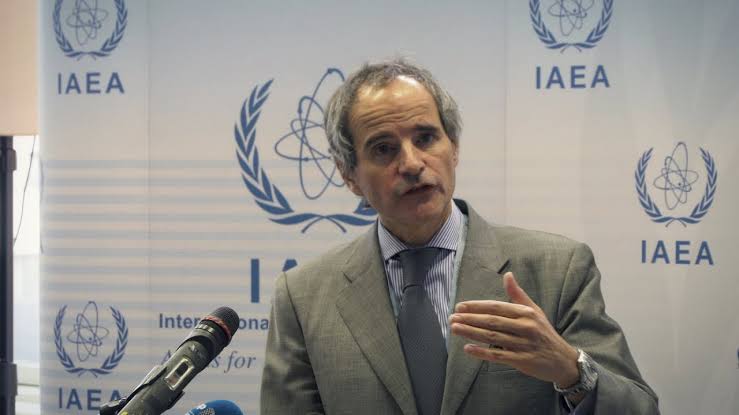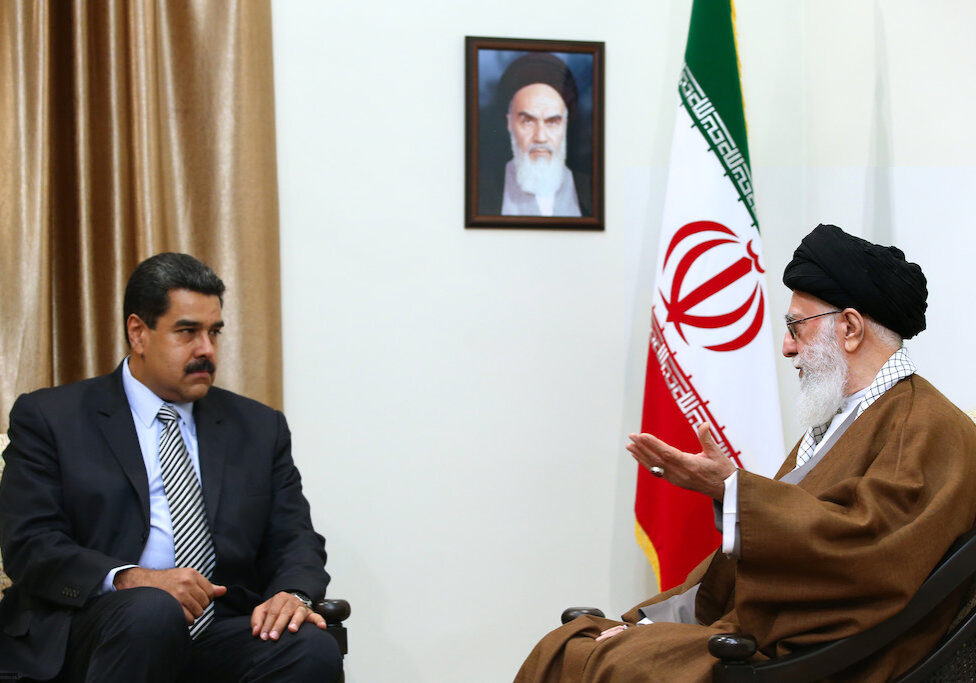Australia/Israel Review
New IAEA chief faces major Iran test
Nov 28, 2019 | Ran Porat

Disturbing news was the welcoming gift for the newly elected Director General (DG) of the International Atomic Energy Agency (IAEA), Argentinian Rafael Mariano Grossi, elected on October 29 (he will officially take office in January 2020).
The aforementioned news came from Iran’s Natanz nuclear facility, where one of the more than a hundred IAEA experts diligently working across Iran to monitor atomic activities was detained. Apparently making good on their earlier threats to restrict IAEA access to nuclear sites, the Iranians cancelled the inspector’s accreditation and she was forced to leave the country.
An experienced diplomat who served in senior IAEA positions (including as assistant DG), the 58-year-old Grossi will need to urgently address the possible serious implications of a deteriorating relationship between the agency and Teheran across numerous fronts.
Secret sites and new finds
The worst-case scenario is the North Korean model. In 2009, Pyongyang kicked all IAEA inspectors out of the country and openly raced towards arming itself with atomic bombs in violation of the Nuclear Non-Proliferation Treaty (NPT).
While they are avid students of the failure of the international community to stop the nuclearisation of North Korea, Iran takes a much more subtle and sophisticated approach in their dealings with the IAEA, opting instead to employ years of evasive behaviour and lack of cooperation with the nuclear watchdog’s investigations.
A Nov. 6 incident exemplifying this strategy was discussed during a special IAEA board meeting, when Italian deputy DG and head of the Department of Safeguards at the agency, Massimo Aparo, complained that Iran was “evading attempts to discover the source of man-made and natural uranium particles detected at a warehouse in Tehran.” Aparo was referring to a warehouse at the Turquzabad suburb of Teheran, visited by IAEA monitors in February.
Before the latest IAEA report confirmed the detection of uranium in the warehouse, Israeli security and intelligence sources revealed that the features and age of the residues of the yet-to-be-enriched uranium found suggest that it did not originate from any declared Iranian nuclear site. This means that the uranium may have been smuggled into the country or manufactured in an illicit Iranian facility – both scenarios which constitute a breach of the NPT, as well as the 2015 Joint Comprehensive Plan of Action (JCPOA) nuclear deal.
Grossi is surely aware of the fact that the Turquzabad warehouse was just one of the previously unknown locations and research activities associated with the illicit military nuclear program revealed in the Iranian secret nuclear archive boldly stolen by Israel’s Mossad early in 2018. The thousands of archive documents reveal that Iran was much closer to achieving a bomb than previously assumed. Until recently, the IAEA has responded quite slowly to the intelligence coming out of the archive, allowing the Iranians valuable time to hide incriminating evidence.
JCPOA openly violated
All of this comes on top of Iran’s open and escalating breaches of the JCPOA nuclear deal. Tensions have been on the rise since US President Donald Trump’s decision in May 2018 to withdraw from the agreement and resume biting economic sanctions on Iran. Various forms of escalation followed, with Iranian attacks on oil tankers, a US drone, and strategic installations in the Persian Gulf (including a bold attack on major Saudi Arabia oil facilities) and more.
Facing little pushback against their open belligerence, the Iranians apparently calculated that similar aggression in the nuclear context would come at a minimal price. Hence, and in order to further turn up the heat on the European signatories of the JCPOA, Iran started to incrementally breach its obligations under the agreement.
The endgame of this package of JCPOA breaches is to accelerate research to improve Iran’s uranium enrichment capacity and speed. For this purpose, as confirmed by the IAEA, the Iranians are now operating advanced types of centrifuges (IR-2m, IR-3, IR-4, IR-5, IR-6, IR-6m, IR-6s, IR-6sm, IR-7, IR-8, IR-8s, IR-9, IR-S, IR-Ss, IR-SB) set up in some cases in cascades of 10, 30 and 164 centrifuges. In addition, they are enriching uranium to higher than the allowed 3.67% purity at increased rates, quickly amassing more than the 300kg fissile material cap under the JCPOA. This was first done at the Natanz facility and is now also occurring at the fortified underground enrichment facility at Fordow, which is supposed to be completely off-limits for enrichment under the JCPOA. All in all, current enrichment capacity in Iran exceeds the JCPOA allowed levels by 36%.
While all this is happening, European JCPOA signatories remain determined to avoid using the “snapback” provisions of Security Council Resolution 2231 – the mechanism for punishing Iran by reinstating all previous UN sanctions on it removed after the deal was sealed. Instead, they continuously beg Iran to roll back its breaches, stressing – just as Iran is also doing – that the deal is not dead.
The bottom line is that Teheran is pushing ahead on all fronts to effectively and dramatically shortens the breakout period needed to amass enough fissile material for a nuclear bomb. According to leading nuclear expert and former UN weapons inspector David Albright, the breakout period is now six to ten months as compared to a year or more after the JCPOA was first implemented. Acceleration of enrichment and continued accumulation of fissile material will soon further shorten that breakout time.
Grossi’s challenge
In 2020, the IAEA under Grossi will continue with its prime and crucial task of maintaining a comprehensive and penetrating monitoring system with robust reporting on Iran in a politically volatile environment while possibly facing increased harassment of inspectors on the ground. Meanwhile, the US is heading into an election year and an impeachment process against President Trump – both may constitute serious distractions from the international cooperation needed to deal with the Iranian crisis. Internal political tensions are also rising in Teheran with mass protests and preparations for parliamentary elections in February.
As IAEA chief, Grossi will need to keep well away from such political stormy waters and make it his primary task to depoliticise the office of the DG. The previous two agency DGs exhibited problematic politicised behaviour with regards to the Iranian file. Egyptian Mohammad El-Baradei (1997-2009) resorted to verbal and legal acrobatics in his reports in an attempt to avoid calling out Iranian violations of international law – apparently out of fear that any adverse findings against Iran would lead to a repeat of the 2003 Iraq war. The late Yukiya Amano (2009-2019) of Japan surrendered to pressure by the JCPOA parties and issued a report that in practice stopped all probes into Teheran’s past military nuclear program without getting the answers from Iran about that history that the JCPOA terms ostensibly required.
Early signs indicate that Grossi may be moving forward on the right track. When asked about the agency’s position on the JCPOA, he categorically stated that “in terms of saving or not saving this [agreement], this is not for the agency to do.” Laying out his vision about the DG’s role, he noted that “my job is to implement the mandate in a manner which is independent, which is fair, which is neutral […and] impermeable to pressure”. If he succeeds in this, everyone will benefit from a powerful UN nuclear watchdog whose pronouncements can be relied upon to be completely based on professional data-gathering, free from political considerations.
Grossi is taking the reins of the IAEA at a time when the agency has never had greater international importance – largely because of its central role in monitoring and reporting on Iran’s nuclear ambitions.
In order to restore the credibility and authority of the UN nuclear watchdog, Grossi will need to take swift, independent and decisive measures to remove any hint of politics from the agency’s activities and return the IAEA to the time when it was universally respected as the professional gatekeeper against nuclear proliferation and the gross threat to global security it continues to represent.






